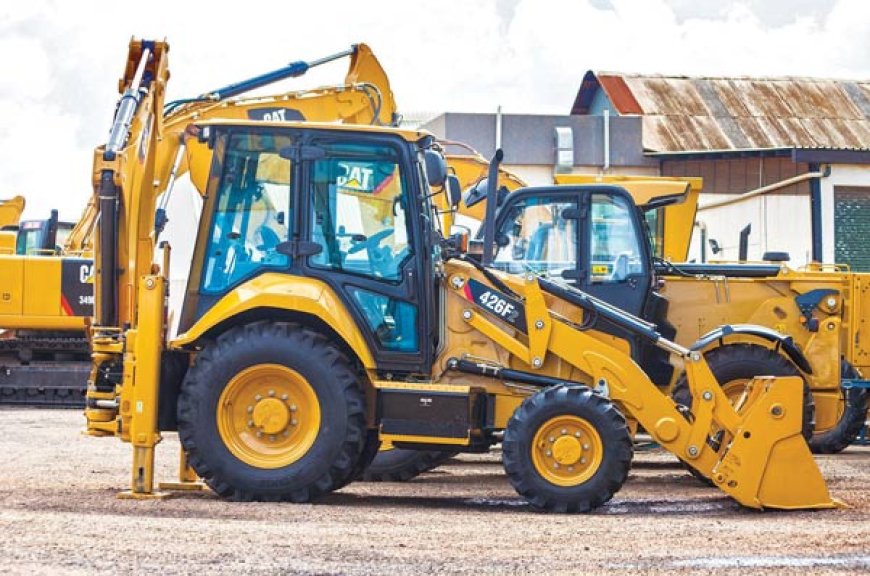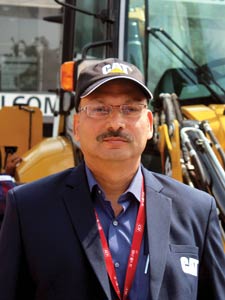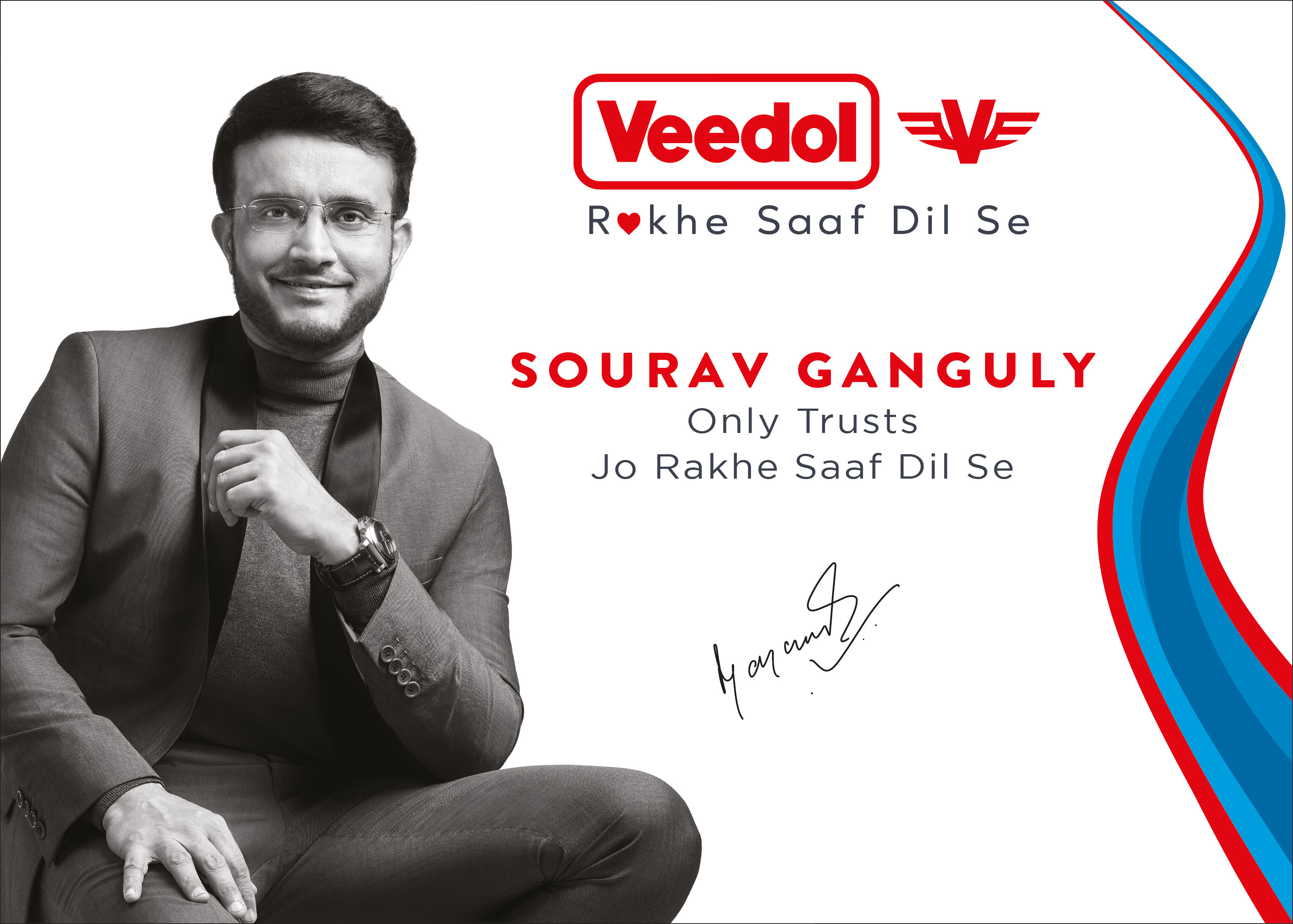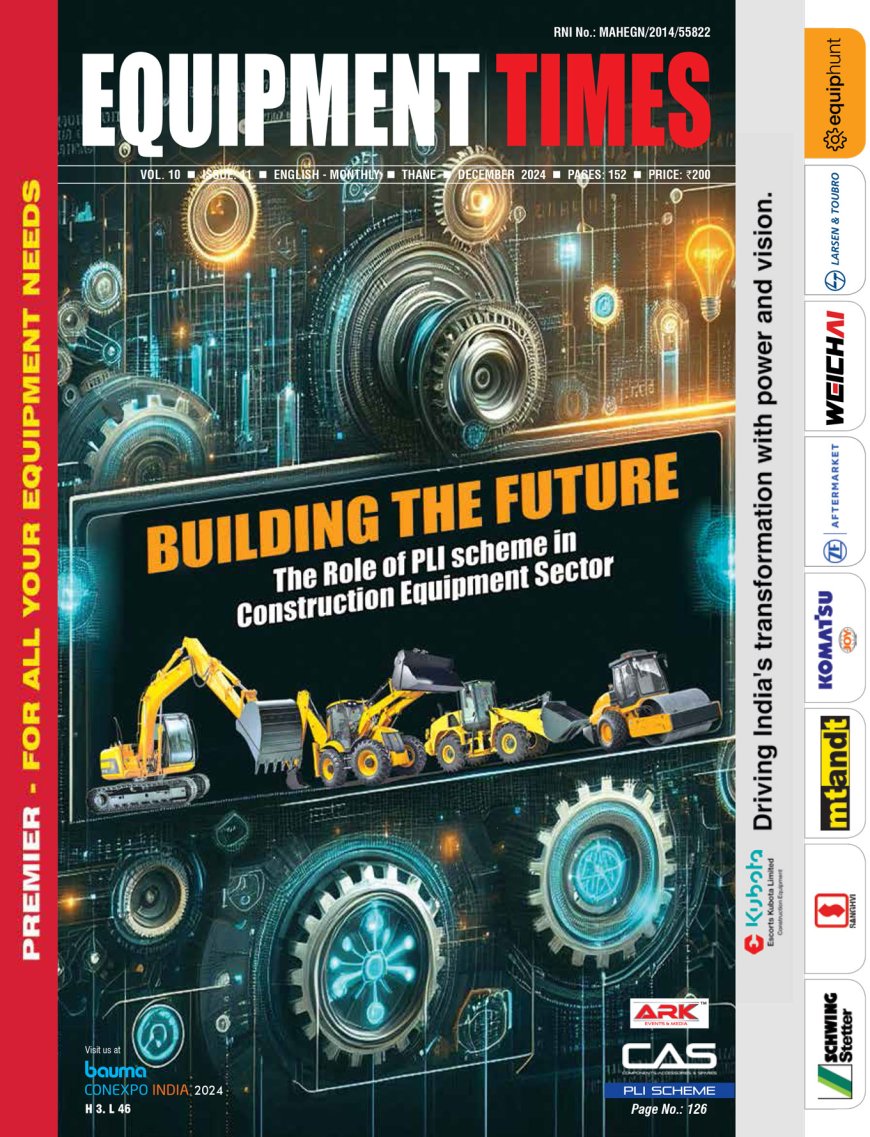“We offer digital-enabled solutions that are available to our customers 24/7″
Amit Bansal, Director Sales & Marketing-BCP Division, Caterpillar India.[/vc_column_text][vc_empty_space][vc_empty_space][vc_empty_space][vc_empty_space] What is your long-term outlook of the CE industry? India is a 1.3 billion people country striving to double the economy to 5 trillion USD by 2024. If that


Amit Bansal,
Director Sales & Marketing-BCP Division,
Caterpillar India.[/vc_column_text][vc_empty_space][vc_empty_space][vc_empty_space][vc_empty_space] What is your long-term outlook of the CE industry?
India is a 1.3 billion people country striving to double the economy to 5 trillion USD by 2024. If that is going to happen, obviously, infrastructure has to play a major role in that. So, we see a very bright future for the construction industry. We are optimistic about the pace of infrastructure development and we will continue to invest the best of our technologies and experiences to meet the unique demands of the region and our customers. We will continue to expand the product lines to not just serve India locally but also other countries of the region.
How do you position yourself in the backhoe loader segment?
We have a philosophy of ‘growing with the market’. So more than anything, we believe in making our customers more successful by using Caterpillar product which are known for its outstanding productivity, durability, reliability and fuel efficiency. These are the things we work upon and we always try to meet the customer requirements in the best possible manner so that they become successful. Our biggest differentiators aren’t just our products themselves but also the way they’re distributed, financed and supported.We are focusing on aftermarket opportunities in parts and services with the dedicated dealer networks of GMMCO and Gainwell Commosales Pvt Ltd in India. From parts availability to expert service diagnosis, planned maintenance to web-enabled condition monitoring, our dealers work alongside customers to improve machine uptime.[/vc_column_text] What is the market for backhoe loaders?
The maximum traction is coming from roads and the rural construction. We have recently added a new state of the art variant of backhoe loader, the Cat 426F2. It is a highly configured machine with industry defining features that have been accepted very well. The machine aims to cater to some of the aggressive topography and terrain requirements where we have focused our efforts on getting the job done comfortably and safely.
How strong is your aftermarket team?
It all starts with the customer and making sure our customers can be more successful with our products and services than they can be with those of any other competitor. We and our dealers understand the importance of having quality replacement parts where and when our customers need them. We offer digital enabled solutions that are available to our customers 24×7 so that the downtime is minimized. These are our strategic differentiators. We are focusing on aftermarket opportunities in parts and services with the dedicated dealer networks of GMMCO and GCPL who got their service and sales branches across India, covering every location in the country. From parts availability to expert service diagnosis, planned maintenance to web-enabled condition monitoring, our dealers work alongside customers to improve machine uptime.[/vc_column_text] What are your initiatives in skilling up of people?
Caterpillar India CSR, in alignment with the Prime Minister’s vision, proposed to implement a unique skill development program in the states of Rajasthan, Uttar Pradesh, Tamil Nadu and Odisha. Caterpillar believes that collaborating with the government on skill development programs will improve the livelihood for underserved communities, and at the same time, support the industry by providing a needed, employable skilled labour force. It is a unique program that supports both labour demand and labour supply, which in turn contributes to India’s growth.
Caterpillar India CSR, along with the Director of Technical Education (DTE-Rajasthan) and Rajasthan Skill and Livelihoods Development Corporation (RSLDC), agreed to take up activities related to vocational education, skill development and entrepreneurship development in the State of Rajasthan. CIPL CSR provides technical and financial support to RSLDC for innovations and activities related to the project. A total of 300 students have graduated from the center, including five women trained to become Cat backhoe loader operators. They have since become master trainers and start-up entrepreneurs.
How digitally are you able to communicate to operator and contractor for efficiency purpose?
Smart construction machinery has become a major trend in the industry. The use of smart technologies helps with more precise operations, which can greatly increase productivity, improve operator environment, provide better fuel efficiency, and reduce operating costs and the impact on the environment. All regions in the world are full of pioneering customers looking to advance their companies in terms of digitization.
While Caterpillar recognizes the importance of digital and has put significant investments in place, including a digital division, we never lose sight of the fact that our goal is to allow our customers to move dirt in the most efficient way. That requires a complete synergy between iron and silicon; we see iron and digital as a single solution rather than two distinct initiatives.
Our machines are built with foresight and the technology that is integrated into the machines is determined by our assessment of how and where our machines will be working over the long-term. This is one of our biggest differentiators.
Cat technologies and services help customers monitor, manage and enhance their jobsite in key areas that impact business results, including equipment management, productivity and safety. For 20 years, Caterpillar has pioneered the use of digital solutions with tools such as ProductLink™, Grade Control, and autonomy.
As Caterpillar has done for the last 90 years, we will continue to develop our products to serve our trusted customers.[/vc_column_text] So far, what is the scenario of employment generation through CAT in India?
Caterpillar has been active in India since the 1930’s. Investments made by Caterpillar in India to-date are approximately US$ 1 billion. Caterpillar and its Indian dealers collectively employ approximately 11,000 employees in India.
Brief us on your CSR activities?
With the introduction of the Companies Act 2013 in India, Caterpillar India Pvt Ltd (CIPL) Corporate Social Responsibility (CSR) took over the efforts of the Caterpillar Foundation’s holistic community development. CIPL CSR is focused on creating sustainable communities in keeping with its vision statement: “Creating a world in which all people’s basic needs – such as shelter, clean water, sanitation, food and reliable power – are fulfilled in a sustainable way and a company that improves the quality of the environment and the communities where we live and work.”
Since 2014, CIPL CSR has worked to create higher living standards in communities through various initiatives focused on access to quality education, an increase in access to clean water, sanitation and hygiene components, and the betterment of surrounding environments. CIPL CSR, through its partners, has supported more than 3,000 students through education programs. In addition, through the Water, Sanitation and Hygiene (WASH) program, CIPL is currently engaged in reclaiming more than 50 acres of polluted lakes to contribute to a better environment.
Caterpillar India CSR, in alignment with the Prime Minister’s vision, proposed to implement a unique skill development program in the states of Rajasthan, Uttar Pradesh, Tamil Nadu and Odisha. Caterpillar believes that collaborating with the government on skill development programs will improve the livelihood for underserved communities, and at the same time, support the industry by providing a needed, employable skilled labour force. It is a unique program that supports both labour demand and labour supply, which in turn contributes to India’s growth.
Similarly, along with the Director of Technical Education (DTE-Rajasthan) and, provides technical and financial support to Rajasthan Skill and Livelihoods Development Corporation (RSLDC) for innovations and activities related to the project. A total of 300 students have graduated from the center, including five women trained to become Cat backhoe loader operators. They have since become master trainers and start-up entrepreneurs. The Odisha Integrated Village Development Program is another noteworthy skills development initiative. The program focuses on holistic development, addressing women empowerment, adolescent health and WASH issues.[/vc_column_text] How geared up is CAT for the demand surge in the near future?
Caterpillar has been a key partner of India since the1930s, supporting growth and development in mining, transportation, construction, and power generation. We have six state-of-the-art manufacturing facilities, two high-tech research & development (R&D) centres and numerous global support organizations. Divisional offices are in Bengaluru, Chennai, Mumbai and Delhi. Our products manufactured in India are not only used for domestic purposes but also exported to customers around the world. Investments made by Caterpillar in India to-date are approximately US$ 1 billion.
One of the unique points of Caterpillar products is that they are a great mix of some of the best global technologies with local flavour to meet Indian customer’s requirements. Caterpillar and its Indian dealers collectively employ approximately 11,000 employees in India. Undoubtedly India is a growing region for construction equipment industry due to the fast-paced infrastructure development. We are introducing innovative products and services, executing our strategy to deliver long-term profitable growth and shareholder value, and – ultimately – making our customers more successful in India, just like we do around the world.[/vc_column_text][/vc_column][/vc_row]
Hits: 192










